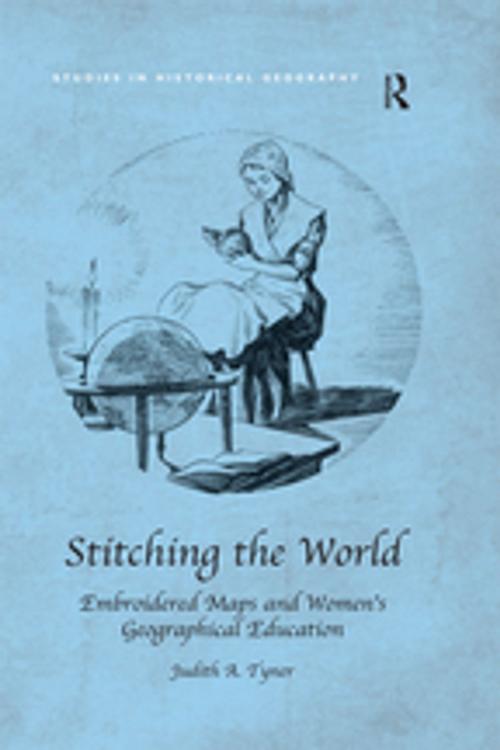Stitching the World: Embroidered Maps and Women’s Geographical Education
Nonfiction, Reference & Language, Reference, Atlases, Social & Cultural Studies, Social Science, Human Geography| Author: | Judith A. Tyner | ISBN: | 9781351897853 |
| Publisher: | Taylor and Francis | Publication: | December 5, 2016 |
| Imprint: | Routledge | Language: | English |
| Author: | Judith A. Tyner |
| ISBN: | 9781351897853 |
| Publisher: | Taylor and Francis |
| Publication: | December 5, 2016 |
| Imprint: | Routledge |
| Language: | English |
From the late eighteenth century until about 1840, schoolgirls in the British Isles and the United States created embroidered map samplers and even silk globes. Hundreds of British maps were made and although American examples are more rare, they form a significant collection of artefacts. Descriptions of these samplers stated that they were designed to teach needlework and geography. The focus of this book is not on stitches and techniques used in 'drafting' the maps, but rather why they were developed, how they diffused from the British Isles to the United States, and why they were made for such a brief time. The events of the late eighteenth and early nineteenth centuries stimulated an explosion of interest in geography. The American and French Revolutions, the wars between France and England, the War of 1812, Captain Cook's voyages, and the explorations of Lewis and Clark made the study of places exciting and important. Geography was the first science taught to girls in school. This period also coincided with major changes in educational theories and practices, especially for girls, and this book uses needlework maps and globes to chart a broader discussion of women's geographic education. In this light, map samplers and embroidered globes represent a transition in women's education from 'accomplishments' in the eighteenth century to challenging geographic education and conventional map drawing in schools and academies of the second half of the nineteenth century. There has been little serious study of these maps by cartographers and, moreover, historians of cartography have largely neglected the role of women in mapping. Children's maps have not been studied, although they might have much to offer about geographical teaching and perceptions of a period, and map samplers have been dismissed because they are the work of schoolgirls. Needlework historians, likewise, have not done in depth studies of map samplers until recently. Stitching the World is an interdisciplinary work drawing on cartography, needlework, and material culture. This book for the first time provides a critical analysis of these artefacts, showing that they offer significant insights into both eighteenth- and nineteenth-century geographic thought and cartography in the USA and the UK and into the development of female education.
From the late eighteenth century until about 1840, schoolgirls in the British Isles and the United States created embroidered map samplers and even silk globes. Hundreds of British maps were made and although American examples are more rare, they form a significant collection of artefacts. Descriptions of these samplers stated that they were designed to teach needlework and geography. The focus of this book is not on stitches and techniques used in 'drafting' the maps, but rather why they were developed, how they diffused from the British Isles to the United States, and why they were made for such a brief time. The events of the late eighteenth and early nineteenth centuries stimulated an explosion of interest in geography. The American and French Revolutions, the wars between France and England, the War of 1812, Captain Cook's voyages, and the explorations of Lewis and Clark made the study of places exciting and important. Geography was the first science taught to girls in school. This period also coincided with major changes in educational theories and practices, especially for girls, and this book uses needlework maps and globes to chart a broader discussion of women's geographic education. In this light, map samplers and embroidered globes represent a transition in women's education from 'accomplishments' in the eighteenth century to challenging geographic education and conventional map drawing in schools and academies of the second half of the nineteenth century. There has been little serious study of these maps by cartographers and, moreover, historians of cartography have largely neglected the role of women in mapping. Children's maps have not been studied, although they might have much to offer about geographical teaching and perceptions of a period, and map samplers have been dismissed because they are the work of schoolgirls. Needlework historians, likewise, have not done in depth studies of map samplers until recently. Stitching the World is an interdisciplinary work drawing on cartography, needlework, and material culture. This book for the first time provides a critical analysis of these artefacts, showing that they offer significant insights into both eighteenth- and nineteenth-century geographic thought and cartography in the USA and the UK and into the development of female education.















